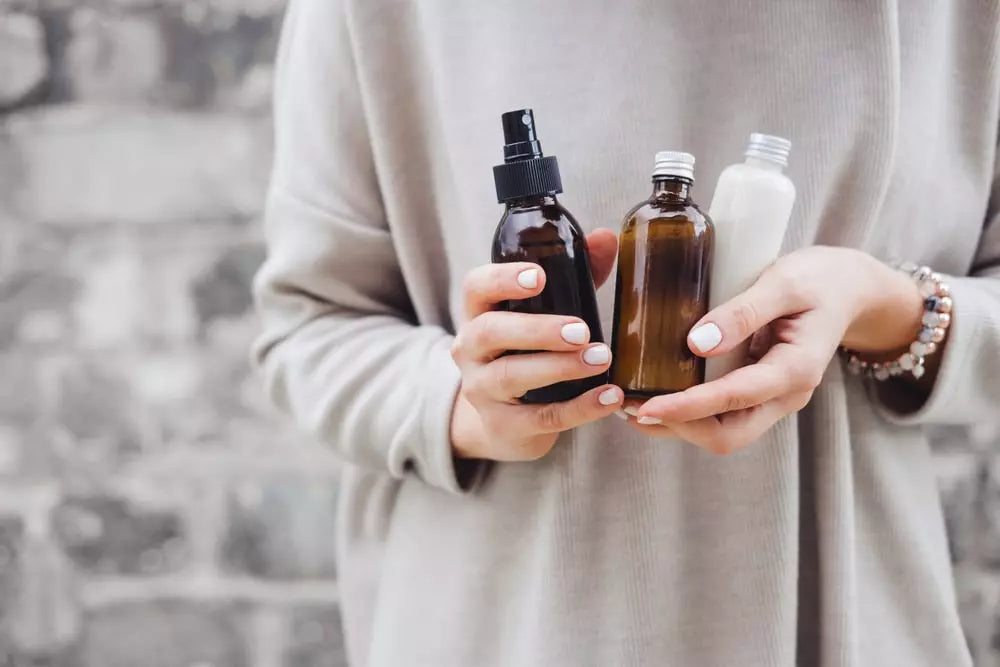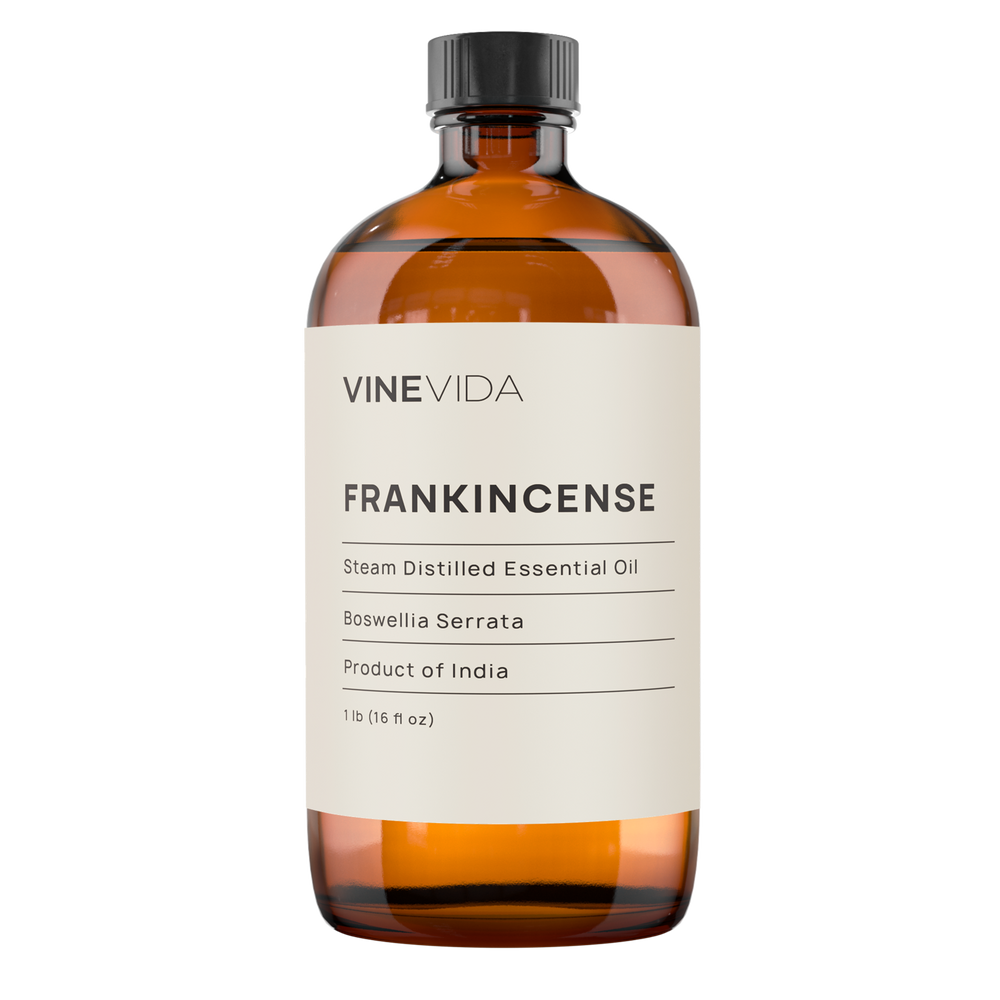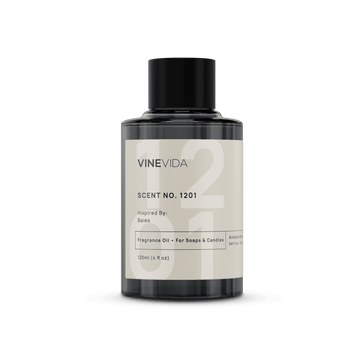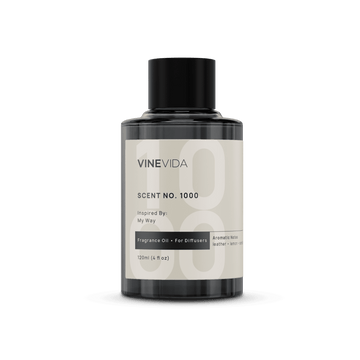Discover the art of crafting your body lotion using essential oils. Our step-by-step guide will lead you through the process of creating a skin-nourishing blend at home. Using a ready-made lotion base or starting from scratch, you can tailor a body lotion to suit your skin type. Adding cosmetic Butter and humectants like glycerin ramp up the nourishing qualities of your body lotion.
Weighing up when to use essential oils vs. fragrance oils can set your body lotion apart. I show how to thicken, thin, and make your lotion less oily in our troubleshooter and give you a handy guide to working out just how much essential oil to use when you learn how to make body lotion with essential oils.
What is Body Lotion?
Body lotions are cosmetic preparations designed to moisturize the skin on your body. Much like facial moisturizers, they have a high concentration of nourishing ingredients, but many tend to have quite a high water content.
However, body lotions are a little richer than face moisturizers, and you can find ones designed to target specific issues, such as cellulite or toning. Body lotions are very popular, and millions of bottles are sold every day across the world.
Why Make Your Own Body Lotion?
I will always advocate making your body lotions; they are simple and give you control over every ingredient.
Avoiding Harmful Chemicals
We are constantly being warned about the overuse of potentially harmful chemicals in our skincare; Rebecca Straus looks at 6 Most Harmful Ingredients Found In Body Lotion in her article and explains the dangers of chemicals like Butylated Hydroxy anisole (BHA), DMDM Hydantoin, Parabens, and Fragrance + Parfum.
When we choose to make our body lotions, we can completely cut out the risk of these chemicals and decide not to use them—opting for 100% natural and even organic ingredients.
Total Control
It can be such a simple process; it does not take much time, and you can scale up recipes to make large batches. The choice of organic and natural preservatives is made all the easier.
Imagine total control of the ingredients, trusting every ingredient you are about to smooth onto your precious skin and your family.
Tailor Made For You
The choice of ingredients should be suited to your skin type. Learn more about skin types in How To Make Face Serum With Essential Oils.
Ingredients and essential oils choices are based on the type of body lotion you want. Do you want something deeply relaxing? Body firming? Or something wickedly sensuous and a bit daring?
Whatever your needs, you can precisely tailor a body lotion suited to you even if you have super sensitive skin.
Best Carrier Oils For Body Lotion
There are many excellent carrier oils; where do you start? That is easy; start with your skin type and choose oils that suit you.
Check out my Carrier Oils for Skin Type for a head start. Then pop right back because you want to ensure you get everything!
Here are some of my best recommendations for all skin types to get you started:
Read More: Best Carrier Oils.
Jojoba Carrier Oil
It is the closest carrier oil we have to replicate our body's natural sebum; for this reason, it is a multi-purpose oil that suits all skin types. It is easily absorbed into the skin, feeding and nourishing it deeply. It is also wonderful to use on your hair and scalp, so don't be afraid to give yourself a treat from head to toe with this one.
Rosehip Carrier Oil
Full of Linoleic Acid, also commonly known as Vitamin F, it is well renowned for plumping the skin and complexion. It also plays a role in strengthening the skin, offering enhanced protection. Commercially, it is used extensively in cosmetic treatments and applications that protect the skin from premature aging and environmental damage. It is also super loaded with Vitamin C, which is lovely for anti-aging preparations.
Argan Carrier Oil
Many of the benefits of Argan Oil are found in its composition; nearly 80% of it is essential fatty acids (Omega 6 and 9). Both of these are potent antioxidants that can soften the skin deeply. Hydrating, nourishing, and feeding the skin helps to smooth out, plump, and refine the skin's surface. It is this effect that helps your skin look younger. Again, another excellent oil for your scalp and hair for a tip-to-toe experience.
Sweet Almond Carrier Oil
It is a great oil to bring the skin back to life. However, it is best combined with another to give lightness to the thicker consistency of Sweet Almond Oil and encourage a little more slipperiness. It is an oil used to nourish and restore skin for thousands of years for a good reason. It may be one to avoid if you have very greasy skin; plump for Jojoba instead, in that instance.
You should not use any nut oils on your skin if you have a nut allergy. If you are still determining which oils come from a nut, check out the individual carrier oils on the website for more detailed information.
Best Essential Oils For Body Lotion
I often get asked, "What are the best essential oils to add to body lotion"? I always answer, "Well, what do you want it to DO"?
Do you have dry patches of skin and need some extra nourishment?
Do you have oily skin that you want to calm down?
Are you trying to target cellulite?
What are you trying to achieve? Always base your essential oil blend and formula around what you want your body lotion to do, and also choose essential oils suited to your skin type.
My Top Choices for Essential Oils For Body Lotion
Rose Geranium (Pelargonium asperum var roseum)
When asked what are the best scents for homemade lotion, Rose Geranium is always at the top of the list; wonderfully sweet, floral, and fresh with a strong scent.
It is a great essential oil to relax you and is widely used to reduce anxiety.
The Geranium oils are wonderfully hydrating for the complexion and nourishing and protecting the skin. It is brilliant for dehydrated skin.
Aromatherapists often add geranium to creams and ointments for dry and flaky skin conditions such as eczema and psoriasis.
Choose this for dry skin.
Safety: Do not use it in the first 16 weeks of pregnancy
Lavender (Lavandula angustifolia)
When you need an essential oil that you can be sure of, plump for Lavender with its gentle, relaxing energy. Use it in minimal amounts, as occasionally, using too much can cause skin irritation.
That distinctive floral fragrance blends well with other florals and essential oils.
Aromatherapists widely use Lavender for skin conditions with inflammation or a soothing effect might be needed. Acne is a prime example; I imagine my mother chasing me through the house as a young teen with a bottle of Lavender as she tried to treat my acne.
Choose this for acne-prone skin.
Safety: Do not use it in the first 16 weeks of pregnancy.
Ylang Ylang (Cananga odorata)
One of my favorites for many reasons; the scent is sublime, heady, intoxicating, and so easy to blend with deeper woody oils like Patchouli and Sandalwood.
I use it as a 'balancer,' and it is always present in skin preparations I make for myself with my combination skin. It is widely thought that ylang-ylang can help regulate sebum production in the skin.
Flowers are also used in Indonesia to strew upon the marital bed of newly married couples as it is considered an effective aphrodisiac.
Choose this for combination skin.
Safety: Do not use it in the first 37 weeks of pregnancy.
Roman Chamomile (Anthemis nobilis L.)
This is one to choose when your body and soul need soothing, and it feels like you need a 'soul-hug.' The essential oils distilled from these bright sunny, daisy-like flowers are just what you need for a long, challenging, and busy day.
Super relaxing and soothing for both your skin and mind, they are an excellent choice for body lotions to relax you before bedtime, bring calm to your morning routine, and set you up for the day.
Choose this for sensitive skin.
Safety: Do not use it in the first 16 weeks of pregnancy.
Frankincense (Boswellia serrata)
This is an essential oil that is a boon for those of us who have more mature skin. It's our beauty secret …so ssshhhhh!
Frankincense essential oil contains components that promote cell regeneration, which is what you want to keep your skin healthy, look smooth and supple, and lift and tighten skin.
Check out what Liz has to say about its myriad of benefits. How To Use Frankincense Oil On The Face.
Choose this for mature and beautifully seasoned skin.
Safety: Do not use it in the first 16 weeks of pregnancy.
Can I Use Fragrance Oils For Lotion Making?
You can use fragrance oils for lotion making; they have their place here.
Fragrance oils help boost the strength of the fragrance and its longevity of it. However, most fragrances are synthetic and chemically derived, so if you use purely natural ingredients, leave fragrance oils out.
VINEVIDA has a range of 'skin safe' fragrance oils that are worth exploring when you want a 'little extra' or to boost a particular fragrance. It can be hard to know which are the best scents for homemade lotions.
Rose essential oil, for example, can be prohibitively expensive, but you can also get a scented sensation from rose fragrance. Fragrances like Genuine Leather offer variations that essential oils cannot replicate, so a fragrance oil might be your better option when you want to add that note of mystery.
You need to weigh up what is more important to you, fragrance and longevity, vs. natural or organic ingredients.
Butter and Humectants
This is a quick note about adding gorgeousness to your body lotions.
Cosmetic Butter is ideally suited to bump up the nourishing qualities of your body lotion. Butter like Shea, Cocoa, and Mango are all good choices. You will need to melt it into a double boiler first and use a hand mixer to whip it into your body lotion base so that it will emulsify and create that lovely creaminess.
I always add a humectant (a substance used to reduce moisture loss) to my body lotion. Glycerin is easily sourced and one that I recommend starting with. Organic versions are available too.
There are many different kinds of humectants; it is worth doing your research if you want to step your game up a bit and try out a variety.
A Super Easy Body Lotion Recipe With Essential Oils
It can be challenging to know where to start because there are so many homemade lotion recipes, and every site seems to have some DIY lotion version. If you are a beginner, that must be clarified, especially if you want to make an organic body lotion.
If you start making your aromatherapy products, you don't have to make your lotion from scratch; you can use a natural organic unscented base lotion and add things to it to tailor it to your skin's needs.
If I am pushed for time, I do this and add extra water content using hydrosols and humectants like glycerin. I add some cosmetic butter or waxes if I want a bit thicker. But often, you don't need to.
Choosing an organic aqueous cream that is a bit thicker in the first place allows you to push the water content and use up to about 70% extra water, but it will give you a very thin and easily absorbed body lotion. It's perfect for those who like to apply body lotion and be able to get dressed right away. You can add as much or as little water as you want.
It is so easy to experiment with and hard to go wrong, so start here if you want to find your feet before you delve into making lotions from scratch.
It is also perfect for those who have super sensitive skin and have found an unscented lotion that works for them. It allows you to add essential oils slowly and gently with a very light dilution that you can increase should your skin agree.
How to Make Super Easy Body Lotion Recipe with Essential Oils: Step-by-Step
Base Ingredients
- 50ml (1.69 fl oz ) Organic water-based cream base or Aqueous cream
- 1 tbsp Glycerine
- 1 tbsp Sweet Almond Carrier Oil
- 1 tsp Witch Hazel
- 50ml (1.69 fl oz ) Rose Geranium Hydrosol or Rosewater
- 50 ml (1.69 fl oz) Spring Water (bottled or boiled)
- Optional * 1% preservative - Follow the manufacturer's instructions.
Now Choose Your Essential Oils Blends Based On Your Skin Type
Essential Oils and Absolutes
Floral and Fresh - Suitable for most skin types but perfect for dry skin.
- 3 drops Rose Geranium Essential Oil (Pelargonium asperum var roseum)
- 3 drops Ylang Ylang Essential Oil (Cananga odorata)
- 2 drops Petitgrain Essential Oil (Citrus aurantium ssp)
Safety: Not suitable for use during the first 37 weeks of pregnancy (Ylang Ylang)
Floral and Green - Sensitive Skin
- 3 drops Violet Leaf Absolute (Viola odorata L.)
- 3 drops Rose Geranium Essential Oil (Pelargonium asperum var roseum)
- 1 drop Sandalwood Essential Oil (Santalum album)
Safety: Not suitable for use during the first 37 weeks of pregnancy (Ylang Ylang)
Woody and Deep - Suitable for all but super sensitive skin
- 1 drop Cedarwood Essential Oil (Cedrus deodara) (If you have susceptible skin - drop this one and add Yarrow or Violet Leaf)
- 3 drops Sandalwood Amyris Essential Oil (Amyris balsamifera)
- 1 drop Yarrow Essential Oil (Achillea millefolium)
(Swap out the Rose geranium hydrosol for Yarrow hydrosol if you are shaving).
- 1 drop Vetiver Essential Oil (Vetiveria zizanoides)
Safety: Not suitable for use during the first 16 weeks of pregnancy.
Equipment
- Measuring Scales
- Non-reactive mixing bowl
- Stainless steel spoon
- Measuring Jug
- Measuring spoons
- Jars and Lids
Instructions
- Read when you need to add your preservative according to the manufacturer's instructions and note when so you remember to add it.
- Weigh out your aqueous cream or water-based cream and place it into the mixing bowl.
- Add in your carrier oil and mix well until thoroughly combined.
- In your measuring jug, measure the hydrosol, add the spring water, and mix the fluids.
- Add the witch hazel and glycerine into the water mixture, and mix well again.
- Slowly pour a small amount of the fluid mixture into the aqueous cream base in the mixing bowl, and combine well with the spoon. Then, add the fluid mixture in small amounts until the desired consistency is obtained.
- If you feel it is too thick, add more spring water, and combine well until the desired consistency is reached.
- Add in your essential oils carefully and stir well until thoroughly combined.
- You may find pouring this mixture from the bowl into the cleaned measuring jug to fill your jars easier.
- Lid immediately. Label and date your jars.
- Always do a 24-hour patch test on your inner elbow or wrist before applying it to your face or body.
Troubleshooting This Recipe
It feels too thin - Add more aqueous cream until you reach the required thickness. Or you could add cosmetic Butter, like Shea Butter or Cocoa Butter.
It is too thick - Add more fluid, water, hydrosol, or witch hazel.
If it is too oily, add a tsp of cornstarch, arrowroot powder, or finely powdered kaolin clay.
And yes, it IS as simple as that.
Professional Body Lotion Recipes
If you feel more adventurous and fancy making your body lotion from scratch, I love the professional attitude and presentation from Whole Elise. In her video How to Make Lotions Like A Professional | All Ingredients Explained, she goes through the purpose of each ingredient and explains them all in depth. It's a significant next step in your lotion-making journey.
How Much Essential Oil To Add to Body Lotion Base
When you start making your products, getting to grips with how much essential oil to add to the body lotion base can be challenging.
Many essential oils have a dilution rate for a healthy adult of 3%, an 2% for people in a weakened state, and 1% for children over the age of 6. 0.5% for any younger than that. We do not recommend using essential oils on children under 6 months old unless it is an emergency.
However, there are always exceptions to the rule, like Ylang Ylang, which has a dilution rate of just 0.80%, and Cinnamon Bark is a teeny 0.07%. It is important to check the safety data of ALL the essential oils you plan to use so that you can adjust the figures as needed. You can find these on the individual essential oil web pages under the 'Documents' tab.
| How Much Essential Oil to Add to Body Lotion Base | |||||
|---|---|---|---|---|---|
| The number of drops are approximate as it is based on the viscosity and weight of the individual essential oils. Measuring is advised. | |||||
| Dilution Rate in ml | 20ml | 50ml | 100ml | 150ml | 200ml |
| 3% |
0.5ml or 10 drops |
1.5ml or 30 drops |
3ml or 60 drops |
4.5ml or 90 drops |
6ml or 120 drops |
| 2% |
0.25ml or 5 drops |
1ml or 20 drops |
2ml or 40 drops |
3ml or 60 drops |
4ml or 80 drops |
| 1% |
0.125 or 2 drops |
0.5ml 10 drops |
1ml or 20 drops |
1.5ml or 30 drops |
2ml or 40 drops |
| 0.5% |
0.06ml or 1 drops |
0.25ml or 5 drops |
0.5ml 10 drops |
1ml or 20 drops |
1.5ml or 30 drops |
If you like working in ounces instead, try out the Nerdy Farm Wife’s Essential Oil Dilution Chart.
How Much Fragrance Oil to Add to a Body Lotion Base
One thing to be aware of with fragrance oils is that each one has guidelines for maximum dilution on the skin based on its chemical makeup.
To be safe, check each fragrance oil for its parameters.
Safety documents are available for each one sold at VINEVIDA. Please peek under the picture on their product pages to find these.
The Final Word
As you can see, making your body lotion is very easy when you use a ready-made base, and if you take a peek at Whole Elise’s video, you will see that a professional result making it from scratch is well within your reach. Whatever your skill level, there is a recipe to suit.
In designing, weigh up carefully what is more important to you in your body lotion, pure and natural ingredients, or longevity and scope of fragrance.
After all, you can find your favorite fragrance in our VINEVIDA collection and turn it into a body lotion for a fraction of the cost of the designer version.
Whatever you want to create, there is something here to suit everyone and start you off on your journey of making body lotions with essential oils and fragrance oils.























